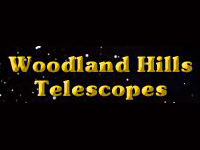By Johannes Stübler This is the 1st GAM post for the Diverse Universe week , April 18-24 2016. This week's posts on the GAM Blog will focus on the diversity of the global astronomy community. In those bad times of growing borders, especially here in Europe, and neighbouring countries the idea of a global event without borders, G lobal A stronomy M onth, powered by A stronomers W ithout B orders becomes more important than ever. It's really bad to see that more and more people have to flee from their home countries due to war and persecution. The more...
By Tavi Greiner Someone once said “those who walk alone are likely to find themselves in places no one has ever been before.” While this expression likely embraces a path for new discoveries, the words perfectly reflect my relationship with the night sky. Although I frequently engage in various outreach to encourage others to “look up”, I do most of my own observing solo. Even in the midst of an otherwise-engaged crowd, I can be completely alone, admiring the night sky and its countless faraway worlds. Whether day or night, working or relaxing, with my eyes or with my mind,...
By The International Dark-Sky Association Part 1 - Eyes In The Sky: Exploring Global Light Pollution With Saterllite Maps The virtual flood of data produced by the DMSP satellites and Suomi NPP is now available to the public. Here are are some websites where you can see the images for yourself. The Blue Marble This site takes both DMSP and VIIRS images and overlays them on an interactive Google Maps that allows users to pan around Earth, and zoom in and out on particular areas of interest. A map for each year from 2008 to 2015 is available, with the...
By The International Dark Sky Association, IDA A composite image of the Earth at night made using data from the Visible Infrared Imaging Radiometer Suite (VIIRS) instrument aboard the Suomi NPP spacecraft. NASA photo. Billions of people around the world routinely experience light pollution in the form of skyglow, the ever-present “haze” of light over cities at night. It comes from light on the ground scattering in the atmosphere and back to our eyes, blotting out the stars. But some of that light manages to travel all the way through the atmosphere and escape to space. Earth-orbiting satellites intercept some...
By Ricardo Cardoso Reis ( Planetário do Porto & Instituto de Astrofísica e Ciências do Espaço ) If you think you're about to read about little green men, then you'll be greatly disappointed. Please remember that the acronym UFO means “Unidentified Flying Object”, not “Alien Flying Saucer” (which would be AFS anyway…). And that's exactly what people are seeing at night, especially during the summer – “constellations” of flying lights in the sky . So, if they fly and you don't know what they are (at least if you don't skip and read ahead) they are, by definition, Unidentified Flying...








